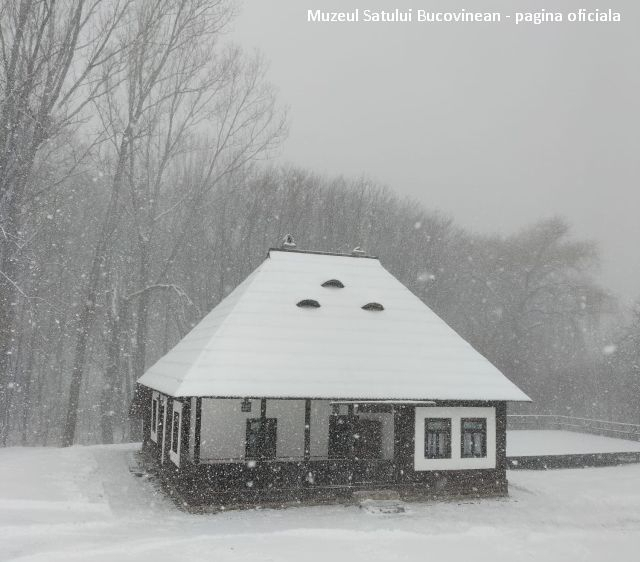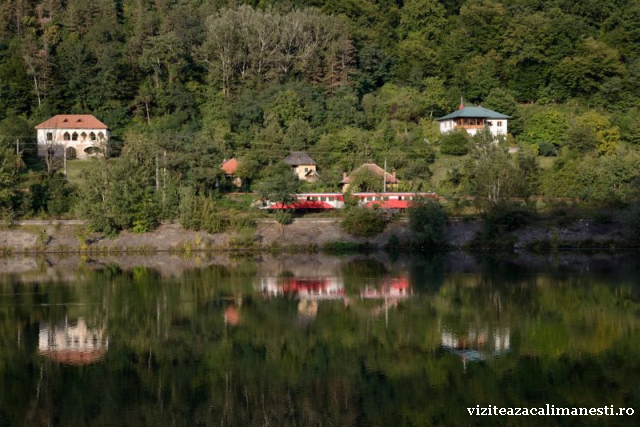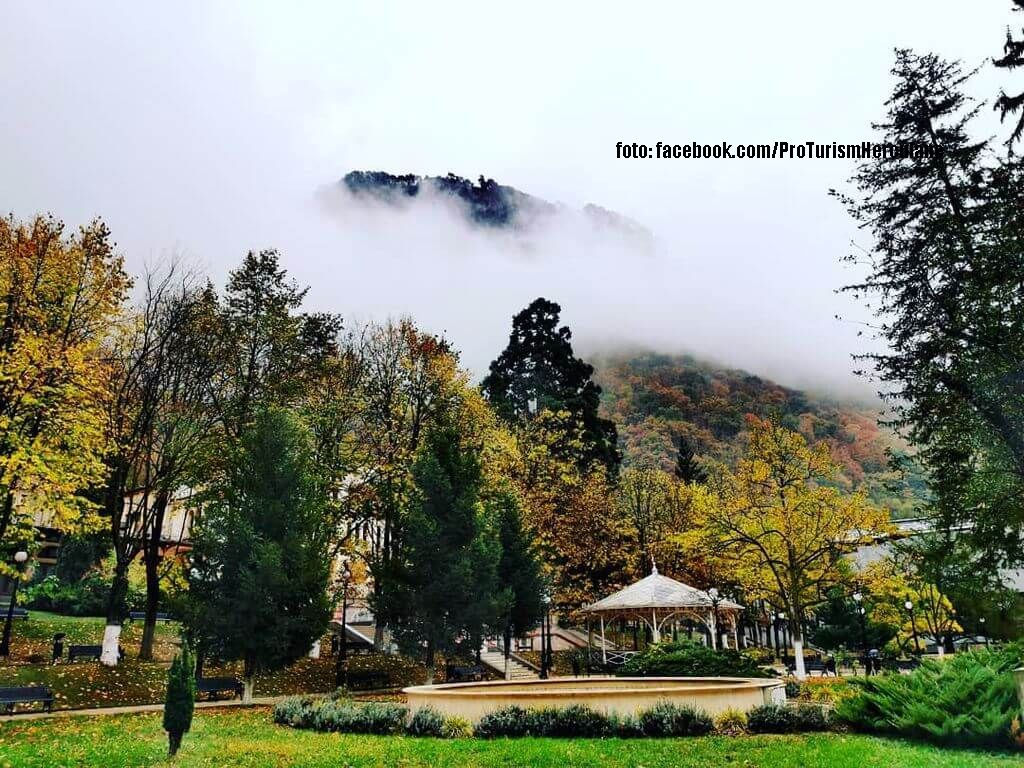Romania and its still rich rural past
Northern Romania's Bukovina Village Museum

Daniel Onea, 17.03.2022, 14:00
We’re
opening up for you, today, the gates of a museum which is a real-size replica
of old-time and traditional Bukovina. Established in the 1970s, the Bukovina Village Museum has been included, since
2004, in the heritage list of Suceava County’s historical monuments. We’re
having a walk around the alleys of the museum only to discover households and
tools which are specific for the rural activities, but also craftsmen and handicraft
items. The director of the Bukovina Village Museum, Dr. Constantin-Emil Ursu, is
our guide today. Dr Ursu told us the establishment was one of Romania’s
youngest traditional art outdoor museums.
Our museum mainly focuses on wooden architecture which is traditional in
this region. Suceava County’s forest-covered surface area accounts for 60%, and
is Romania’s second-largest such area. We know all too well wood has been the
staple material in the building of the Bukovina village, where, jointly with
Romanians, people of other ethnic groups have led their lives: German, Polish,
Ukrainians, Jews or Italians. Our museum is an attempt at reconstructing a
village with everything that at that time was available, regarding households, community
constructions or the technical installations that partially stand proof of the
area’s crafts and, of course, of the Bukovina locals’ way of life. Each
micro-zone has a life of its own. So, as part of the Village Museum, you can
even visit a pottery workshop, but also a local pub, a little church, which is
still functional, a school and suchlike. Since it is one of the youngest museums,
we have opened nearly half of the surface area that was mentioned in the final stage
of the project, 2.2 hectares of thereabouts. Yet that area is very illustrative
for the essence of the Bukovina village. As for our second surface area, there
are self-contained households erected on the premises, yet the infrastructure does
not exist, for the time being.
We
asked the director of the Bukovina National Museum, Dr. Constantin-Emil Ursu,
to speak about the layout of the various structures as part of the Bukovina
Village Museum.
The objectives have not been placed thematically.
They are incorporated in the territory of the village. There are several households,
then the mill follows, placed on the banks of a rivulet that flows through the
village, then you can see the church, opposite the school, and so on. We have
tried to recreate the image of a traditional Bukovina village using the interiors
as well, which makes a very good impression on our visitors. The items we have
range from towels and wall carpets to ovens and stoves, extremely different
from one another. Of course, we have traditional
furniture and traditional apparel pieces. Almost all that we have in this museum
is functional, including, for instance, the ironware of the recreated village. Also,
the educational activities hold pride of place with us. Unfortunately, traditional
crafts have disappeared, little by little, or have become less interesting. We
have gone at all lengths, to the best of our abilities, to gather as many
children as possible, for the summer months, so they can learn the ropes of a
certain craft, yet there’s more to it than that, we’ve been meaning to get them
understand what the creation of a traditional object means.
Throughout the year, on the premises of the Bukovina Village
Museum, all sorts of events are being staged. They promote the craftsmanship
objects, traditional art, in general, but also the simple and clean way of life
of the Bukovina village. The director of the Bukovina
Village Museum, Dr. Constantin-Emil Ursu.
The largest number of
visitors we have has been drawn by
the event themed Come, people, come to the fair ! It is a different kind
of fair, it doesn’t only have traditional products, it also has music and
stylized traditional products. It has been spoken of a lot, and people still talk
about it, the embroidered peasant blouse, that is. The traditional embroidered
blouse has been center-stage in the world of fashion. Yet we can equally speak
like that about jewels. Visitors can also find household items: mugs, plates
and suchlike. Very many visitors have turned up to place orders, for instance,
for pottery in a guesthouse, for jewelry shops, for leatherware, and so on. We
tried to stage an event that can also give a boost to the local economy.
Of course, tourists’ feedback was quick to appear. Therefore,
they view the museum as a landmark, as a tourist asset you shouldn’t miss while
on a stay in Suceava County. Constantin-Emil Ursu once again.
We’ve equally enjoyed our success
with the foreign and the Romanian tourists. Unfortunately, the rural world is not
that well represented in the urban areas any more. There are generations that
no longer have grandparents in the rural regions, they’ve grown up and studied
abroad. These youngsters view the Bukovina Village Museum as a curiosity. Obviously,
our museum charms the foreign tourists. As part of the permanent exhibition, for
three objectives, we tried to reconstruct the traditional rites of passage:
baptism, wedding and funeral. Now, speaking about craftsmen once again, we have
a dedicated stand in the museum. In another development, for the summer season,
starting in May, there are a couple of craftsmen who put up for sale the items
they hand-crafted, on the premises, at the museum.
The director of the Bukovina National Museum, Dr.
Constantin-Emil Ursu, says they have plans for the future. These plans will
stick to establishment’s present characteristic, that of a living museum.
The Suceava County Council has already
signed a contract, and the design for the second part of the museum will follow.
Many of the problems will be solved, starting with the infrastructure and the preservation
and completion of certain households. The contract has received European
funding. Also, we have received a donation, a church included on the historical
monuments list. It will be placed in the perimeter of the second development stage
for our museum. We hope for the second church to be opened to visitors as well,
just as the one we have today is, lying in the first perimeter, the Customs
Church. The latter church becomes functional once the Holy Week begins. We have
a priest who has been generously distributed to us by the Radauti and Suceava Archbishopric.
So tourists can also attend masses until the final part of year in November. We’re
trying to give a new lease of life to our objectives, as far as the law allows
and as long as the functions can be reenacted.
We have launched our invitation! In the hopes that we have
talked you into visiting the Bukovina Village Museum, next time we extend an
invitation to Romania’s smallest national park, the Buila-Vanturarita National Park.
Yet the tourist offer there is impressive.
(EN)






























